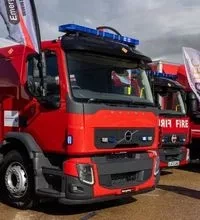How it works: Ethernet networks

There’s more data than ever before being shipped around vehicles, but in order for it to flow smoothly it needs a high-speed network, and that’s where Ethernet comes in
These days, vehicles are reliant on huge amounts of data being shifted around. Whether it’s the powertrain, drivetrain, infotainment or safety systems, these data transfers are essential to make sure everything works reliably and consistently.
All of this means that the days of just using a basic CAN bus network to transfer information are long gone. New, higher bandwidth networks are now finding their way into vehicles.
Ethernet, for example, is a family of computer networking technologies commonly used in local area networks. It was introduced commercially in 1980 and first standardised in 1983 as IEEE 802.3. Automotive Ethernet, or IEEE 802.3bw (previously known as BroadR-Reach), is an Ethernet standard specifically designed for automotive applications.
Automotive Ethernet enables multiple in-vehicle systems to access information simultaneously using an unshielded single twisted-pair cable, which saves weight. Similar physical wiring is already used by most CAN systems, but this is often shielded with foil or wire braid.
The main benefit compared with existing networking systems is the greater signal bandwidth. To achieve this, automotive Ethernet uses a full-duplex communication link, which means it can transmit and receive simultaneously. It employs pulse-amplitude modulation (PAM3) signalling, which uses a pulse that can have a positive, zero or negative voltage value at any given moment.
While most serial standards such as CAN operate with just one device communicating at a time, automotive Ethernet allows the primary and secondary devices to communicate simultaneously over the same link.
This technology will be a key enabler of fully connected autonomous vehicles because it can connect vehicle systems faster and more efficiently than CAN. The cameras and lidar sensors that autonomous vehicles will rely on for data will require lots of bandwidth, and this demand is only likely to increase further. For example, automotive Ethernet currently offers speeds of up to 100Mb/s, but the IEEE 802.3 working group is now developing a faster multi-gig standard. By contrast, CAN and LIN are running at kilobit-per-second and low megabit-per-second speeds.
That said, automotive Ethernet does have a rival in the form of Media Oriented Systems Transport (MOST). Primarily used for infotainment systems, MOST offers speeds of up to 150Mb/s. However, proprietary licencing, restricted access to hardware and reliance on heavy coax cables – or easily damaged optical fibre – have so far limited its market share.




